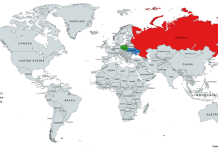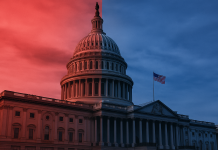
President Donald Trump announced a new phase of support for Ukraine on Monday, expressing dissatisfaction with Russian President Vladimir Putin while still leaving room for future talks. During a press conference with NATO Secretary General Mark Rutte, Trump laid out plans to deliver advanced U.S. weaponry to Ukraine, funded by NATO allies.
He also issued a 50-day deadline to the Kremlin: either negotiate a ceasefire or face sweeping tariffs and economic sanctions. Trump said the U.S. would impose up to 100% tariffs on Russian imports and apply secondary penalties to countries that continue purchasing Russian oil, such as India and China.
Although Trump made clear he’s frustrated with Russia’s ongoing strikes on Ukrainian cities, he avoided fully denouncing Putin, stating that their personal relationship remains complicated. He expressed disappointment in how their discussions often appear promising but are followed by renewed military action from Moscow.
Ukraine continues to endure regular bombardment, particularly in the capital Kyiv. Russia has escalated air and drone attacks, forcing residents into shelters each night. Trump’s promise to deliver Patriot missile systems was welcomed by Ukrainian officials, although some analysts noted the high cost of these interceptors makes them less efficient for stopping low-budget drone attacks.
Defense analyst Matthew Savill suggested the impact of the new weapons would depend heavily on timing and scale, as Russia seems poised to use the coming weeks to reinforce its position. While the move may improve Ukraine’s defenses, he cautioned against assuming it will lead to a quick change on the battlefield.
Trump’s decision to route military assistance through NATO addresses domestic concerns over U.S. spending abroad. He emphasized that European allies—including Germany, Sweden, and the Netherlands—will cover the cost of the aid. Rutte supported the plan, saying it empowers NATO countries to actively contribute without overburdening the U.S.
Despite Trump’s stronger tone, his broader approach remains measured. He has been reluctant to fully cut ties with Russia, describing Putin as difficult to deal with but still someone he hopes to reach an agreement with. Some critics view the strategy as more focused on optics than policy, especially given past delays in aid shipments and vague enforcement of earlier sanctions.
So far, Putin has not responded to the new ultimatum. Russian nationalist voices have interpreted the deadline as a challenge to escalate further in Ukraine before facing increased pressure.
Ultimately, while Trump’s message signals growing frustration, the path forward hinges on whether Russia believes U.S. pressure will grow stronger—or fade once again.
This image is the property of The New Dispatch LLC and is not licenseable for external use without explicit written permission.







